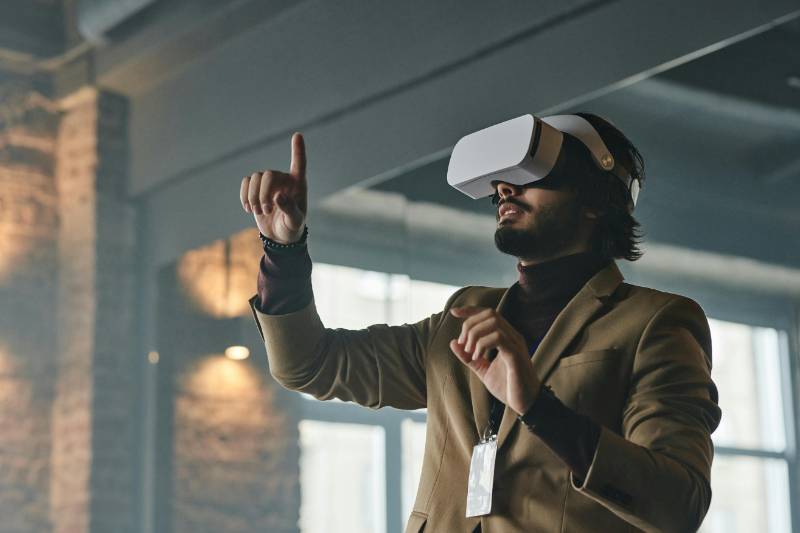
Indoor Positioning Systems (IPS): GPS for Indoors?
5 min read
11 Aug 2025
Indoor Positioning Systems (IPS) are technologies that enable precise navigation and location-based services inside buildings where GPS signals may be unreliable or unavailable. This article explores the applications, technologies, benefits, challenges, and future trends of IPS.
Applications of Indoor Positioning Systems
Retail and Shopping: Enhancing shopping experiences with indoor navigation, personalized offers, and location-based promotions within malls and retail stores.
Healthcare Facilities: Optimizing patient care with asset tracking, staff navigation, and real-time location data of medical equipment and personnel.
Corporate Offices: Improving workplace efficiency with room booking systems, employee navigation, and facility management solutions.
Technologies Behind Indoor Positioning Systems
Wi-Fi Positioning: Using Wi-Fi access points to triangulate a device's position based on signal strength, allowing for indoor navigation and location-based services.
Bluetooth Low Energy (BLE): Deploying beacons that communicate with mobile devices to provide precise location data and trigger proximity-based notifications and actions.
Inertial Navigation Systems (INS): Integrating sensors like accelerometers and gyroscopes to track movement and position changes within enclosed spaces where GPS signals are unavailable.
Benefits and Impact
Enhanced User Experience: Offering seamless indoor navigation, personalized recommendations, and location-based notifications to improve visitor satisfaction and engagement.
Operational Efficiency: Optimizing resource allocation, workflow management, and facility utilization through real-time monitoring and analytics.
Safety and Emergency Response: Providing accurate location information during emergencies, facilitating rapid responses and evacuations in indoor environments.
Challenges and Considerations
Mapping and Calibration: Creating detailed indoor maps and calibrating IPS infrastructure to ensure accuracy and reliability of location data across different environments.
Privacy and Data Security: Addressing concerns related to data collection, storage, and access permissions in compliance with privacy regulations and user consent requirements.
Integration and Scalability: Overcoming challenges in integrating IPS with existing systems and scaling solutions to support larger buildings, campuses, or multi-floor facilities.
Future Trends in Indoor Positioning Systems
Augmented Reality (AR) Integration: Enhancing indoor navigation and user interactions with AR overlays, indoor mapping, and virtual guidance for immersive experiences.
5G Connectivity: Leveraging high-speed 5G networks for faster data transmission, reduced latency, and enhanced reliability in indoor positioning applications.
Edge Computing: Processing location data locally at the edge of the network to reduce latency, improve responsiveness, and support real-time decision-making in IPS deployments.
Conclusion
Indoor Positioning Systems are revolutionizing navigation and location-based services within enclosed spaces, offering businesses, institutions, and consumers new opportunities for efficiency, safety, and enhanced experiences. As IPS technologies advance and integrate with emerging innovations, they are poised to play a pivotal role in transforming indoor environments and digital interactions.

The AR Breakthrough That Will Make Blockchain Transactions Simpler Than Ever!
7 min read | 23 Sep 2025
How AI Is Making Blockchain Smarter and Safer – The Inside Scoop!
6 min read | 22 Sep 2025
The Big Tech Twist: How VR Is Set to Disrupt Blockchain Like Never Before!
6 min read | 21 Sep 2025
Unlocking the Power of AR: How Augmented Reality Is Set to Revolutionize Blockchain!
5 min read | 20 Sep 2025More Articles

Augmented Reality in Retail: How Virtual Try-Ons Are Boosting Sales
9 min read | 24 Sep 2025

The Potential of VR for Skill Training: From Surgery to Space Exploration
6 min read | 23 Sep 2025

The Integration of AR in Live Events: Enhancing Audience Engagement and Interaction
5 min read | 22 Sep 2025

The Ethics of VR: Exploring the Psychological Impact of Virtual Realities
6 min read | 21 Sep 2025
More Articles

Electric Vehicles: Revolutionizing the Automotive Industry
5 min read | 06 Apr 2025

Artificial Intelligence in Education: Personalized Learning and Beyond
3 min read | 05 Apr 2025

Robots in Everyday Life: From Companion Bots to Delivery Drones
2 min read | 04 Apr 2025

Wearable Tech: Enhancing Fitness and Health Monitoring
3 min read | 03 Apr 2025
